Would it sound ironic if I were to mention the speed, and slowed hinderance of manual focus as the two best qualities that this lens can provide a photographer? Let’s be honest, there are not many lenses in existence that offer this large a maximum aperture for any system, anywhere. Certainly not very many that come in at under a thousand bucks, but this is the case for the micro 4/3 mount, Voigtländer Nokton series. Yes, this 42.5mm (85mm equivalent field of view) lens is joined by a soon to be 10.5mm f/0.95 (21mm e-fov), a killer 17.5mm f/0.95 (35mm e-fov) and a 25mm f/0.95 (50mm e-fov) to create a set of super fast, Nokton wonder lenses.
I have been using the also stellar Olympus 45mm f/1.8 lens of late, and before I took off on a recent trip, knowing I’d be doing a vast majority of my shooting in the darker hours, I felt the one thing I was really lacking, was a really fast lens. A remarkably solid and well built hunk of metal and glass, this 85mm equivalent lens has been calling me ever since it was announced. Well, I decided that I’d benefit more fully from a really fast portrait focal length over the long run, and would gain a good amount of latitude while handholding it combined with the IBIS in the GX7, so I bit.
C’mon in to see a few shots, and read my thoughts on this optical marvel.
The Voigtländer Nokton 42.5mm f/0.95 lens is comprised of 11 elements in 8 groups with one “super high refractive element”, one aspherical element, the ability to de-click the 10 blade aperture (most useful for use in video) and boasts an aperture range of f/0.95 to f/16, adjustable in half stops. It weighs 1.26lbs (571g) making it “not light” and measures in at just under 3″ long without the included metal hood attached. Similar specs to the awesome Olympus 75mm f/1.8 lens, albeit noticeably a bit heavier off the camera but that difference is not quite as noticeable when on the camera.
With a remarkably short close focus distance of 9″ or 23cm, you get into the suburbs of macro magnification at 1:4 which is pretty rad, and for a lens this fast it provides some absolutely razor thin focusing planes. I needed to stop down to f/4 for the eye shot below to keep the eyelashes in focus to give you an idea at or at least close to minimum focusing distance.
It also looks and feels pretty badass, so there’s that too. While heavy by mirrorless standards, on my GX7, it felt good in the hand, well balanced and added up to just around 2 lbs total making for a very manageable rig during full days out and about shooting. Here’s a shot compared, size wise versus the Oly 75mm and the Oly 45mm:
I’ve read, on many occasions, how people who shoot with the Voigtländer Noktons (any of them really) for the micro 4/3 system, absolutely love them. They have their own distinct signature, are built like absolute tanks, and as mentioned, are remarkably fast. When the Pana-Leica 42.5mm f/1.2 lens was announced for $1600, I ran out and bought the Oly 45. Not that the Leica isn’t worth the money, I just felt shellacked when just mere days before, the Fuji X system released their very own 85mm f/1.2 equivalent lens for $999.
For the same price as the Fuji lens, this Voigtländer lens comes in at a half stop faster, but does not auto focus. Is that a big deal? Yes, and no. If you’re shooting sports, or kids in any capacity, yes, auto focus makes a huge difference. If you’re shooting portraits, or street, nah, I don’t think so. If the subject your shooting speaks the same language as you, and is willing to listen to you as you ramble about in that shared tongue, manual focus is easy. If you’re shooting street scenes or candids, the zone focusing, enabled by the very nice and accurate distance scale on the lens makes for a very quick task, especially considering that focus peaking is awesome.
But my eyes! I can’t focus accurately while looking at an LCD screen or through an EVF! A couple years ago, I’d have agreed with you, but now, with all new cameras in the m4/3 landscape offering focus peaking, manual focus is almost as easy as focusing through a split prism finder. Seriously, focus peaking is awesome, and it works anywhere in the frame making manual focusing easy wherever your subject falls. Add to that the ability to crop into the live view image to fine tune your focus, and it gets even easier. An ultra fast aperture like f/0.95 is challenging at the best of times to focus properly, but here is where the inherently deeper depth of field compared to the angle of view comes into play and becomes an asset. You get an 85mm equivalent field of view with the depth of field from a 42.5mm lens all while having the light absorbing qualities of an f/0.95 light vacuum, sucking up shutter speed aiding photons like a champ.
I’ve also mentioned in the past, that I enjoy, and even prefer shooting with a manual focusing lens sometimes because it forces me to be both more aware of and intentional with my shots. Not that I can’t do that with an AF lens, I just tend to think about taking a picture much more when using a manual lens, pre visualizing, anticipating and pre focusing whenever I can, because it is more prevalent in the process by nature. Yes, it slows me down, but that can be refreshing, and for me, it ties me into the act of photography more and causes me to stay more aware between shots. I love auto focus lenses and have often been saved by quick wake times and lightning fast auto focus, but changing it up keeps me fresh, and I like doing that from time to time.
How about video? I have no idea. Sure I shot some video of my kids with this lens, and some horribly planned travel video as I was walking down the street, so trust me when I say, you don’t want to know about motion pictures, or this lens’ ability in that arena from me.
From what I hear, these lenses are wonderful for video, one big boon being the ability to declick the aperture making for a smooth, click less pull. To do that, one simply pulls the small ring just ahead of the aperture ring (the one with the white dot on it) toward the body, or aperture ring, and rotate it either way 180 degrees. That ring has knurling on it to grip and turn, and will click into a lock after rotating. The de-clicked hemisphere is recognized by a yellow dot to set aperture as opposed to the standard click stop mark which is white. Easy, and a cool feature I’m sure.
Alright, how about the ins and outs, nuts and bolts on this little bad boy? Below are some test shots showing the depth of field, sharpness, and even some CA differences through the whole range of aperture values available on this lens.
This first series was shot from roughly 25 feet away from the point of focus which is the bike seat. A distance that would easily enable a full body portrait, or group shot in landscape orientation. Click on any to see larger.
To my eye, even wide open at this focus distance, at the point of focus it’s very sharp. There is certainly some noticeable vignetting through f/2, and the CA visible wide open on the handle bars is noticeable, but neither are a deal breaker for me considering the maximum aperture has a larger measured diameter than the focal length of the lens. Vignetting, to me, is easily workable, and I find I often introduce it for portraits and the like to help the composition by drawing visual interest in toward the subject, plus it’s easy to correct for if desired. As we stop down, the CA disappears by f/2 as does the vignetting by f/2.8.
Here is one more showing a much closer focusing distance of about 2.5-3 feet. It could be considered a “head shot” distance. I apologize for not shooting a head, but I was out wandering around early in the morning, had the time to do this, and figured a bike box would move around far less than someone’s head anyway keeping everything in the exact same spot. The focal point in this one is the “E” in “Amarone”. Again, feel free to click any to see larger.
More or less the same traits as the previous set, but I wanted to show the shallow DOF capabilities for use in terms of closer focusing distances here.
I have found that wide open, at f/0.95, this lens has a bit of a sweet spot where if you’re too close to your subject, fine detail is softened as the lens struggles a little bit. Not unique to any lens this fast (or many lenses slower than this). Focusing on distant subjects suffer from the same issue where things struggle to get to “tack sharp” status, but I can’t really think of a scenario where I’d be shooting landscapes at f/0.95 so this is probably less an issue. Shooting between about 3′ and say 15′ (1m-5m) or so is where this lens shines wide open which is pretty perfect seeing that between these distances are your perfect portrait window. If you are to stop down to f/1.4, it sharpens up noticeably. By f/2 – f/2.8 this lens is very sharp and at f/5.6, this lens is about as sharp as any lens I’ve used. After f/8, as seems to be about par for the course with optics for the system, diffraction seems to start dragging that sharpness back down.
Alright, final conclusion time. What do I like, dislike and who do I think this lens is for?
Firstly, there is not really anything I dislike about this lens, at all. Sure, It would be nice if it was weather sealed, cooked breakfast and cost $50, but the quality for the dollar provides enough value and uniqueness in its qualities to be well worth the asking price of $999 in my opinion, hands down. I love being able to save a stop or two in ISO value while out and about in the darker hours, and the focal length lends itself beautifully to candid, intimate shots, portraiture or street shooting. It’s heavy, but compared to an equivalent full frame optic, what am I saying, there are so few full frame optics even close to offering this set of skills that for those few that are out there, I’ll never even be able to dream of affording them. That, I believe, is the best thing that this lens offers. It’s built to last and gives micro 4/3 shooters an optical tool that most every photographer dreams about.
The longer the focal length, the inherent shallowing in the depth of field at the same focus distance, and shallow DOF is probably one of the biggest draws to an f/0.95 lens right? Providing that cinematic quality of focus separation plays really well to shooting candids, or people, certainly for video. Portraiture often benefits from selective focus with dreamy, out of focus backgrounds too.
Of course, you’ll have the “FF equivalent” nay sayers which are normally misguided in that the DOF for this lens is the exact same as it would be on a full frame camera with the same 42.5mm focal length. For this system, it just crops into the image making the angle of view tighter. For instance, this lens on a micro 4/3 camera would have a near identical DOF to a 50mm f/1.2 lens on full frame if both were shot wide open from the same distance. If we could find a 42.5mm f/0.95 lens for a full frame mount, the DOF wide open, regardless of the format, would be identical from the same shooting distance. If shallow DOF is what you want, while gaining the ability to shoot in near darkness at workable ISO’s, this lens is a great way to do that.
I think this lens would benefit any system user who doesn’t mind manually focusing and is looking for a short tele or portrait focal length. If you shoot a lot of natural light or environmental portraits, candids or street, aside from the Leica 42.5mm f/1.2 or perhaps the Olympus 75mm f/1.8 assuming you had the room, I don’t think I’ve seen a better lens for that purpose for this system. Video, sure. I’m sure video folks love it. The long, smooth focus pull has a stiff response making it stay where you set it, and the ability to de-click the aperture is probably a big deal.
Compared to the Oly 45mm f/1.8 lens, it isn’t a fair fight. The Oly is a GREAT lens, don’t get me wrong, but comparing these two lenses is like comparing a Ferrari F12 Berlinetta and a Toyota Camry. They’re both cars (or similar focal length lenses) but the difference is in the detail, the quality of craftsmanship and the ride, oh the ride. The Voigtländer has more control over the depth of field, and has over a full stop of speed, handy for lower light shooting, you could throw dozens of Oly 45mm’s at it as hard as you could and it wouldn’t even scratch this lens while the plastic Oly’s would be in pieces. It is a tank. The IQ at f/1.8 (or f/1.7 in the Voigt’s half stop case) may be comparable, but the Oly can’t compare, faster than that. Essentially, aside from AF, and size/weight reduction, the Oly provides nothing that the Voigt can’t do better from my experience. Do you need a Ferrari? Probably not, but damn it is fun to drive a Ferrari. (*full disclosure, sadly I’ve never actually driven a Ferrari, but I imagine it would be a blast. I have driven a Camry, and it was absolutely okay.)
Next to the Pana-Leica 42.5mm Nocticron f/1.2 lens is probably a closer comparison to IQ, speed and luxury. While the Nocti isn’t quite capable of nearly as much light transmission, or shallower DOF at max aperture, it does boast AF and optical image stabilization which is nothing to sneeze at. Those features come with a cost though, and at a 50%+ premium on price over the Voigtländer, it resides in its own exclusive zip code. For event shooters, (or anyone needing auto focus), I’d say the Leica is worth the extra money as you’ll need the reliability of AF to capture constantly passing moments and probably be buying with the ability to recoup your costs from weddings, etc. For studio shooters, videographers or the jack of all trades, I’d certainly take a good look at the Voigty. I’m very happy that I did. Is auto focus and optical image stabilization worth $500-600? That is the question I asked myself, and I decided that for me, it wasn’t.
Here is the Voigtländer, on the GX7 with and without the metal lens hood, included with the lens:
It’s not cheap, that is for sure. But this is not a cheaply made lens, and if you look at what it provides, there is no lens for any system, anywhere that can do what this lens does for near this same price at this same level of build and image quality that I’ve ever heard of. In that way, maybe it is kinda cheap.
You can see the lens via the links below:
Voigtländer Nokton 42.5mm f/0.95 at B&H HERE
Voigtländer Nokton 42.5mm f/0.95 at Adorama HERE
Thanks for the read, and let me know your thoughts below in the comments. Questions? Fire away. Find me on Facebook, Twitter, Flickr or Instagram to connect, and if you haven’t already, add your email at the top of the page to get new articles as they’re posted.
Happy holidays to all, and happy shooting!
T


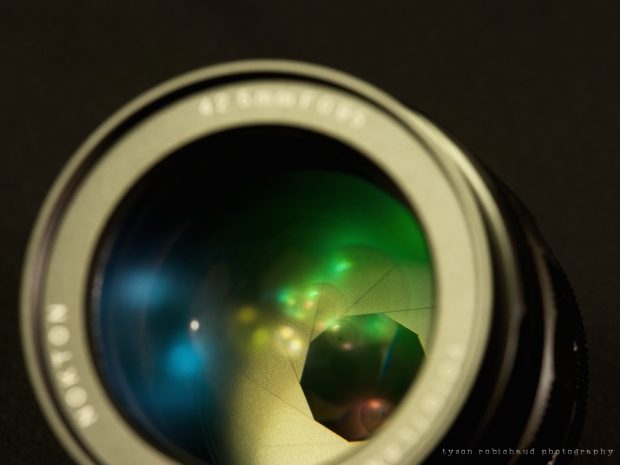
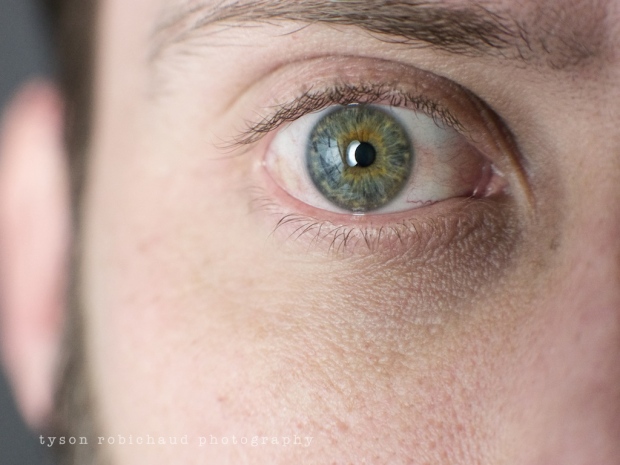
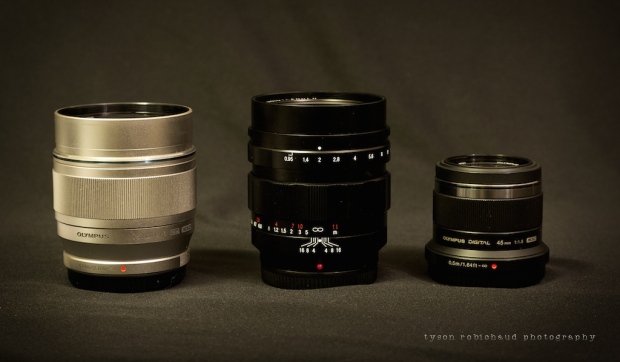
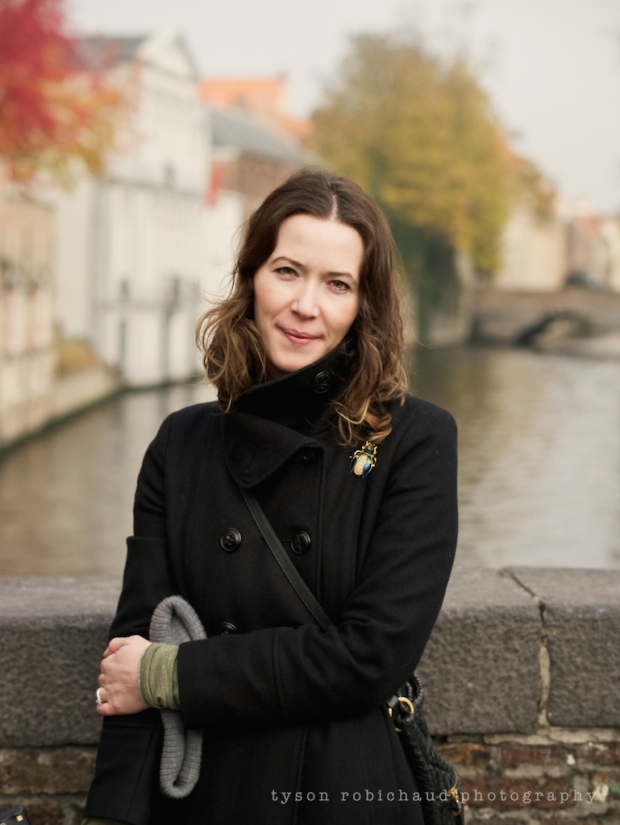



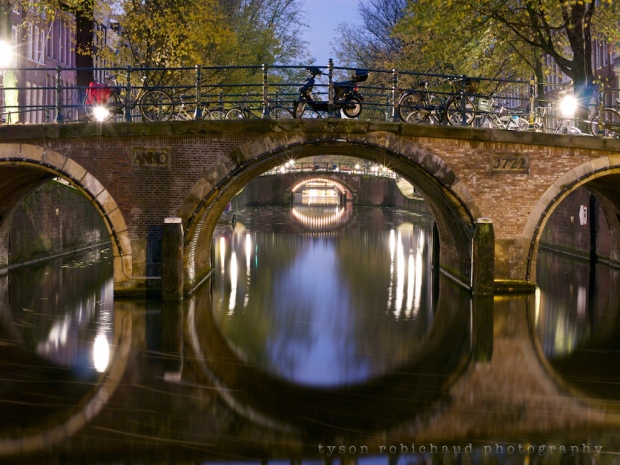



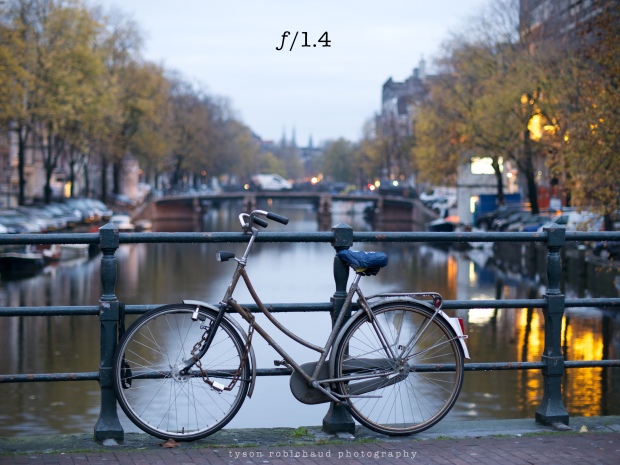






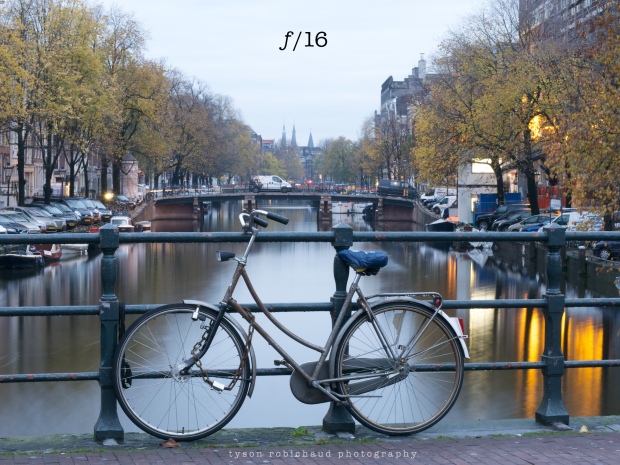




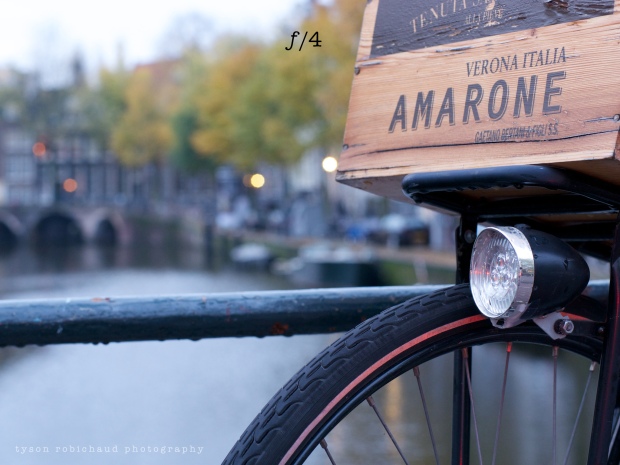
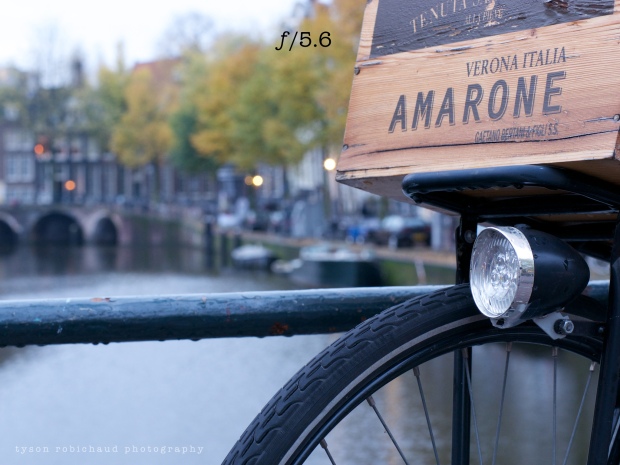

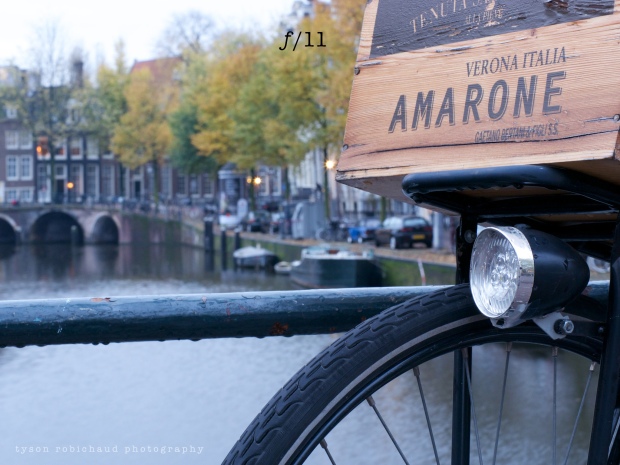

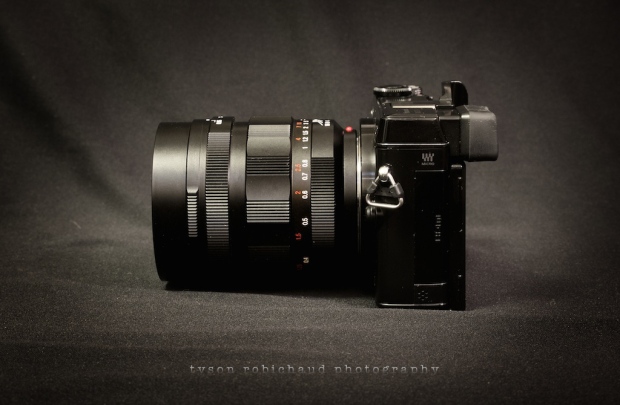

it’s soooo tempting… but there are so many noktons now to choose from 🙂
thanks a lot for the review, Tyson. it was an enjoyable read as usual.
LikeLike
Thanks man. I know, I really want the 10.5mm, assuming it is going to be well controlled for distortion, because the system doesn’t have anything like it. The 17.5mm might be my perfect lens for all around shooting, but there are a lot of other lenses right around that focal length for quite a bit less making that decision harder too. If one can justify the money, I don’t think you could go wrong with any of them. This is my first micro 4/3 Voigt, and my second Voigtlander lens overall (I have a 40mm f/2 Ultron in an EF mount as well, which is also awesome) and going by these two lenses, Cosina has upheld the Voigty tradition to great result.
LikeLike
these decisions are indeed hard and the price point is not really helpful in these matters… i’m torn between the 17.5 and the 42.5mm… but then again there’s the 75mm olympus that proved really helpful in concert photography… but then there’s only so much money left 🙂
but it’s really good to know there is so much choice (if you can afford it) in this system.
cheers,
peter
LikeLike
Amen Peter.
I also really like that there are reasonable options if we do want fast lenses, assuming we can live with manual focusing, like the Rokinons. I would like to try out their 10mm/2.8 and their 12mm/2, both of which are pretty affordable considering what the equivalents are in a proprietary mount for the micro 4/3 (or any) system. I’m still holding out for an ultra wide prime at a reasonable price though… I am dreaming of a quality, 7mm or 8mm manual prime. Doesn’t need to be remarkably fast, but I need it to be well corrected optically. The Rokinon 14mm f/2.8 full frame lens for me is a good bench mark. Cheap, and solidly performing for landscape and interior stuff. Man, if someone can pull that off for the m4/3 system at or under $400, they’d have my money in a heartbeat.
t
LikeLike
Thanks for the review Tyson. If only those things growing on trees were money, I’d have all the m4/3 Voigtlander lenses! That said, the 17.5mm is just perfect for non-quick-moving shots. The Voigtlander managed to convince me to brave up for a manual lens and I’m glad I did!
LikeLike
Thanks Jin. With focus peaking, it really takes so much stress off the eye. I feel like after shooting with this for a couple days, I had a familiarity with the focusing that it became pretty quick and I’d say ‘mostly’ accurate 🙂 Most of the missed focus shots were entirely of my doing, and I wouldn’t choose this lens to shoot fast and erratically moving subjects, but man oh man, it’s a fun, interactive, some may say ‘retro’ shooting experience.
LikeLike
That lens is huge! I guess that’s what happens when speed is a priority. Would love this lens nonetheless. I imagine it to be a fantastic bit of glass in low light, as you say. Thanks for the review.
LikeLike
Yeah, all of the f/0.95s are about the size of the Oly 75 which is large by the system’s standard, but pretty compact in the hand. I just saw a picture taken of me shooting the GX7 + 42.5mm and in my hands, with the cam up to my face, it looks like a toy. I guess I didn’t notice that I am a giant apparently, but good to know I guess. Relative to my previously owned Zeiss 85 f/1.4, this Voigt is tiny.
LikeLike
Thanks for reminding me about the 10.5mm lens that is coming. I was seriously considering the 17.5, but wider would be better.
I’ve noticed the focus peaking just a bit and it would be useful at night, even though the GH4’s EVF is very bright. I haven’t seen focus peaking through the E-M1’s EVF yet.
It’s sad that zoom lenses of such huge apertures are not available. That yet-to-be-released Olympus 7-14mm f/2.8 looks very good but not in dark conditions.
LikeLike
Nobuyuki, the focus peaking has two settings. One of them is practically useless from my experience as it is too subtle. The higher of the two is far better and more visible in most cases, but it does require contrast to be visible.
Yes, the 10.5 might be just the ticket. I’ve been waiting for Olympus or Panasonic to release a 7mm or 8mm prime. I’d have lived happily with an f/2.8 rectilinear that wide, but the 21mm equivalent might just be wide enough for me, and having the extra speed won’t hurt either 🙂
LikeLike
I can almost guarantee you’ll not see a fixed focal length that low from Panasonic or Olympus, except for the fish eye. Creating one that is optically correct takes too many resources for a specialty item. They’d rather people go to another system or use an adapter.
Thanks for the explanation on the focus peaking, as well as the detailed 42.5mm review. The GH4’s manual focus magnification window is a delight compared to the GH3, and it serves multiple purposes, especially when I’m doing minor adjustments after the AF finishes.
I’ve had so many thoughts on lenses recently, and so I’ve concentrated on doing video to put my current equipment to use instead.
LikeLike
When I read your blog intro in my mailbox stating you committed to the Nokton 42.5mm, I had a sinking feeling in the pit of my stomach, as my new PL 42.5mm just came this week with my new GH4. I thought, oh-no, I just put my money down on the wrong horse. After reading the full blog entry, I am feeling better about my decision, as I will be using the lens in “real life” situations and not studio. BTW, I also bought the PL15mm to put on the GH4 as my daily carry lens. Thanks for all the wonderful reviews. I may yet need to get a GX7 to go with the serious GH4 and pocket-sized GM1, so I can try out the IBIS.
LikeLike
Trust me, I’d have loved to buy the new PL42.5/1.2 as I’m sure it will continue to be the best tested lens for the system for some time. It came down more between the $ for the PL42.5 and the new 40-150/2.8 lens at that price point for me, and I opted for the zoom to see if I couldn’t replace my Canon 70-200/2.8IS L lens with it. I’ll eventually sell one of those off, pretty much offsetting the purchase price. Had I owned the 85/1.2L lens, the PL would have been the choice, surely. Buying the Voigt was easier when I knew I could probably sell off the Oly 45 for a decent amount to fund it as well. It was a game of financial chess as it were, especially at this time of year.
I’m trying to figure out how to buy a GH4 myself 🙂 I think the GH, GX and GM combo offers a great three punch combo. I have to say though, the GX7 has been my favorite m4/3 camera I’ve ever shot with. It does everything well enough and especially for those who enjoy the Panasonic cameras, has such an intuitive interface with the right amount of external control, all the necessary bells and whistles and great IQ. I do like having an added thumb rest (the one that slips into the hotshoe) which makes the balance of the larger lenses so much more comfortable for my big paws.
Enjoy the Leica duo, they’re killer lenses!
Thanks Geordon.
t
LikeLike
Personally, I’d invest in a cable release and a tripod, shoot at a slower speed and crop my 20mm f1.4 or 45mm Leica/Pana.
LikeLike
It’s great to have the options, certainly Terry!
What I think I really enjoy about the Voigt, is the ability in more cases to not need the tripod or cable release. That, and the ability to really obliterate the out of focus areas at closer focusing distances. That it gets down to 1:4 magnification is pretty sweet too, although at the minimum focusing distance it really needs to either be stopped down and/or on a tripod for consistent results.
I hope all is well man! Happy holidays.
t
LikeLike
Excellent, thorough review with some nice shots… as always!
This is such a great lens! I got mine when it first came out. Coupled with the GX7, it just feels right… yes, it’s a heavy lens, but the combo just feels so solid and compact and right! All at the same time. It’s a joy to shoot with and that Voigtländer color and rendering is just so special.
I use it for as a general purpose lens… street shooting and for close-up shooting when I don’t want to carry a macro lens. It’s incredibly versatile! I use it in M mode with Constant Preview activated, front dial for aperture and rear Control Wheel for shutter speed. Peaking is okay, but I find magnified view much better for nailing focus.
It’s unfortunate that manual lenses are verboten for so many. Shooting manual is all about slowing down a bit, being more aware, conscious, in the moment… rather than machine gunning with AF and picking the best shot. I guess it’s a leftover from shooting chromes. More people should really just give it a shot. There’s SO much to gain on so many level going manual!
LikeLike
Thanks Jeff,
It is a meaty lens, but it does feel perfectly balanced for the GX7 in my opinion as well.
I think that there are many of us who have been shooting for long enough to remember manual focus lenses, and I think because of the system’s adaptability for older, third party optics, it has reinvigorated some of that lost, manual passion, or at least has for me. Video/hybrid shooting has also shown how useful a good manual optic can be as well. I’d also guess that most people interested in super fast optics understand that IF, and where there are AF versions of really fast lenses, we have to pay quite a bit more for them, and therefore see the value with the current crop of options. I look to a system like the Leica M mount format, and most of my lust is down to their ultra fast lenses. In Leica land, we’re talking of $5-10,000 MANUAL focus lenses, and while I doubt anyone would argue against Leica’s quality, very few real people see them as a realistic value for their return. These Voigtys are a slightly less rich man’s path down a similar road and really do offer a unique shooting experience which I think more folks come around to wanting on their own. It’s not for everyone, but it is for me! 🙂
Happy holidays man,
t
LikeLike
I have an GX7 also with the nokton 17.5mm/.95. It’s an awasome lens and sometimes i feel to need an portrait lens (the 17.5mm is very nice for environmental portrait). And what a pleasure to take pictures in low light at 0.95 even 1.2. It was impossible before when i got the 15/1.7, 20/1.7, 25/1.4 and 45/1.8. In low light, it’s difficult to take pictures, almost the time at wide aperture, the ISO is always between 1600/3200. with the nokton, it’s 800/1600, it change everything. Thanks for your review.
LikeLike
A stop is a stop, and really with the Voigts, we’re talking near two stops compared to most of the “fast” lenses for the system which is substantial.
Thanks krixoff!
LikeLike
And let’s be clear, when you buy nokton lens for micro FT, it’s because we want to shoot at wide aperture almost the time. And it’s my case.
LikeLike
Agreed!
LikeLike
Yes, but not necessarily.
I use my Noktons in all lighting situations, having the ability to shoot wide-open, in very low light, simply adds to their utility. Their close-focusing abilities are yet another plus. Their gorgeous color and rendering make them use-all-the-time lenses!
LikeLike
While I am in no way afraid to stop this bad boy down, I will admit to shooting this thing at f/1.4 or faster, 90%+ of the time. It is just so nice to have a lens that performs so well at such large aperture settings that I tend to start looking for, and seeing shots in terms of more isolated focus with this lens. With ISO125 and 1/8000sec on the GX7, it is rare for me to need to stop it down (light wise) past that unless I’m zone focusing or shooting something requiring a much greater DOF.
LikeLike
It would be interesting to compare with the Olympus 75 millimetri f / 1.8.
Size and minimum distance are almost equal but 75 costs half and from what I see I think that 75 is better.
Here my picture taken with the Olympus 75 millimetri f / 1.8
http://www.romeocolombo.com/Sony7andOlympus5/Olympus-OMD-EM5-MZuiko-75mm-F1/
Greetings to all
Romeo
LikeLike
Hi Romeo,
That is my father’s name as well! I haven’t met too many Romeos, but all I’ve met are good folk 🙂
Yeah, the Oly 75mm is an awesome lens, and size wise, it is very similar to the Voigtländer, although the Voigt is a little heavier. The minimum focusing distance on the Oly though is 84cm/33″ which is a far cry from the 23cm/9″ MFD on the Voigt. The respective angles of view are also very different obviously, and of course the Oly in an AF enabled lens while the Voigt is manual, but also boasts nearly two full stops over the Oly. Two very different lenses which is also not really mentioning the rendering differences between the two. Cost wise, at least here in the states, the Voigt is only 10% more expensive than the Oly 75. As to which is better? I wouldn’t say one is universally better than the other because they’re two different lenses providing two different sets of usefulness for different scenarios. I’m really glad I have both personally, and I only wish that Olympus would have foreseen the benefit of being able to use the Oly 75mm and other longer focal lengths with their 1.4x Telecoverter which would convert the 75 to a 105 (210mm equiv) f/2.5 lens, and that would be really cool.
Thanks Romeo.
t
LikeLike
Thanks for the reply
On the price I am wrong, I am confused with the Nocticron 42,5mm f/1.2
However, the 75mm I would not change with any other lens.
Greetings
Romeo
LikeLike
Thanks Romeo.
I agree. There isn’t a comparable lens in the micro 4/3 landscape that I’d trade the Oly 75mm in for either at this point. If there was an f/0.95 version though… maybe 🙂
LikeLike
This seems like an excellent lens, and as a relative neophyte, one of these days I am going to take the manual focus plunge. But I already have a 45mm lens that I like, thank you, although a slower one. It’s the Panasonic Leica 45mm 2.8, and reviewers tend to forget about its qualities as a portrait and street lens. Colours and resolution are lovely, at least to me. Your thoughts?
Thanks
Frank
LikeLike
The PL45/2.8, from the little time I’ve been able to shoot with it, is a great lens. It has that similar Leica signature, fidelity and contrast profile that the PL25 and PL15 have, which is to say, great. I did not have enough time with it in low light to see how it might compare to the horrid AF on the Oly 60mm which I bought, and after a couple weeks returned because in anything less than outdoor sunshine, the AF hunted worse than any lens I’ve used, even when religiously using the focus limiter. The manual focus by wire was just too frustrating to be useful in a macro setting for me. I came to the conclusion personally that I’d not buy another macro lens for the system unless it was mechanically geared for manual focus, but I’ve also not heard that the PL45 suffers in the same way. To be honest, I think that all the Oly lenses I own (45/1.8, 75/1.8 and 40-150/2.8) all suffer with AF in lower light (the 45mm less so), much more so compared to the Pana lenses I have. This has been on both Oly and Pana bodies too, so it’s not a lens/body issue from my experience. I’m not sure why it is, but it has been for me.
LikeLike
That’s interesting re focus, Tyson.
On my EM-1 the 60mm focusses much faster than your experience .. a panny quirk??
LikeLike
Nope, I shot it on the Oly EM5. It was horrible in lower contrast, and over the last couple years, I’ve heard from various others who have had the same experience. In good light, it is capable of being quick. If there is little contrast, or lower overall light, this lens can be an absolute dog. I, just today, had two instances shooting the Oly 40-150 f/2.8 lens where it would not focus, causing me to miss two shots, and all I could figure out was that there was too little contrast (even though it was mid morning, unobstructed sun) as I was shooting into an area that wasn’t in direct sunlight. I’ve found many of the Oly lenses (much more so than the Pana lenses) on both Oly and Pana bodies, to have far too many issues with being unable to achieve focus. The further I get along, the more I’m feeling the need to sell the Oly lenses in lieu of either pana options, or just leaving this system home if and when I’m shooting anything where a fleeting moment may be necessary to getting whichever shot I’m tasked with getting. Totally excusable in day to day shooting, but I wouldn’t feel comfortable shooting an event, or anything involving people where I was being paid.
thanks for the comment, Mick.
Cheers,
t
LikeLike
Pingback: *A Pana-Leica Nocticron 42.5mm f/1.2 review – I never should have doubted you. | Tyson Robichaud Photo-blography
Great written! I love the Voigtlander Stuff – thanks
LikeLike
Thank you, S.
LikeLike
Pingback: *Micro 4/3 Portrait Lens Shoot Out! Leica Nocti vs Voigtländer Nokton vs Olympus | Tyson Robichaud Photo-blography
Hi Tyson,
I am about to buy a GX7 and a Voigtlander 42.5mm. I currently own a GX1 but no portrait lense as I sold my Oly 45 a few months ago.
One question is about stabilization. Do you have trembling hands that make it hard to focus even with focus peaking and magnification with those kind of lenses?
I am a bit worry about that as the GX7 does not stabilize the view finder. As I do not really like the Oly bodies ergonomics, I don’t really want to but those even though the IBIS is better for me as, as far as I understood, it stabilizes the view finder as well.
Well, what’s your thoughts about that ?
Thank you, and great reviews !
Eric
LikeLike
Hi Eric,
Thank you. Unfortunately, the IBIS in the GX7 does in fact, not stabilize the live view, but truth be told, I’ve not had any problems with live view, via the LCD or EVF being too shaky with the only exception being the really, really long focal lengths (like the 100-300 or the 40-150 + 1.4extender at the 210mm focal length) and even then, if shooting a static subject, it’s not a problem. Really only a problem if the subject is moving somewhat quickly around where I need to follow it, or if it is particularly windy or something like that. For a portrait focal length like 85mm or 90mm, I’ve never had any major issue with handshake combined with the lack of vibration compensation in the live view feed. If you are particularly shaky, a stabilized live view could certainly be beneficial, but as you’ve said, if you’re not liking the ergonomics of a different option, a more secure seat in the hand may provide more stability than a poor grip with the compensation. That would be a personal decision. I’ve just put the Voigt on the GX7 and tried to really move it around while composing, and I think that as long as I wasn’t handholding and shooting at very close distances (within a couple feet let’s say) I think that I could work with it. Indoors, without extraneous light coming at me from the sides, I’d have no problem using the viewfinder, even when a bit shaky. Outdoors, it might prove a little trickier as it can make it a little harder to see, but could be worked around as well. The GX7 otherwise is a great camera, and has been my all time favorite camera to shoot with overall. I have liked shooting with it that much. It’s a joy. Nothing is perfect, but this has been the closest to perfect for me in the micro 4/3 system so far.
The combination of the GX7+Voigt 42.5 is a treat to use. Wide open, it can be tricky to nail focus, but that would be the case with or without IBIS when talking about a lens that fast. Focus peaking definitely helps, as does working on a good bracing/breathing/shooting technique. It takes the automation out of it which is both great in that it forces us to really focus (no pun intended) on the shooting, but tricky as well because we’re the determining factor on success or failure 🙂
I don’t think you’d be disappointed with this combo at all, and if you are, I’d imagine you wouldn’t have much problem selling off either the camera or lens for near what you’ve paid.
Have fun!
Cheers,
Tyson
LikeLike
Thanks for your answer !
I think I will go for the combo… And as you said, if I am disappointed I will have no problem selling it off. But I am sure I won’t.
LikeLike
Hello Tyson,
Just wanted to tell you that I bought my GX7 a few days ago and I am very happy with it. I didn’t had much time to shot with it until yet but the ergonomy is great. It feels great in the hand, the viewfinder is nice, focus peaking is helping a lot.
Still haven’t bought the Voigty but probably coming soon.
Thanks for your advices !
Eric
LikeLike
Love your reviews. Fun to read and very helpful to finding what works for my style of shooting. Thank you!
LikeLike
Thank you, Dannelle. I appreciate you saying so.
Best,
Tyson
LikeLike
Hello Tyson
This is the first time I have read any of your reviews. I have been surfing around reading all the new information on the Panny GH5. I had the GH3 and then sold it and have the GH4 with the grip. Those will be sold for the GH5 at some point. Video first but certainly photos, with the new GH5 coming. Right now I defer to a Sony A7r II with some great Zeiss glass.
But in addition to the two excellent original Panny F/2.8 12-35 and 35-100mm lenses …. last April I picked up the Nokton 17.5mm beauty and cannot wait to add the IBIS of the GH5 and all of its more advanced processing, dual cards (one for video backup …. oh hell yeah!)
All that said …. why I took the time to write this is to say how much I thoroughly enjoyed all the writing you did for this review and for the 3 lens review with the Nokton, PL and Oly lenses that contained this link. And your wonderful photos liberally offered all through the articles. You have a “wonderful” way with words and offer a very enjoyable and warm read. This is now bookmarked.
Thanks very much
Ron
LikeLike
Welcome, and thank you Ron. Your comment prompted me to reread this article for the first time in quite a while. Ah, the sweet Voigty. I’m half thinking of doing a swap for a while with the Nocticron for this guy again. It still lives in the family, luckily, so that might be fun to revisit the magic I remember in this lens.
The GH5 looks to be a beast. The seemingly killer video specs and features would be all but lost on me, but that’s not enough to kill the lust. I have really found a groove with the GX series cams, so I’m hoping the next release there will incorporate a more simpleton version of the vid specs and hopefully the newly designed sensor at about half the price. That and my curiosity to see what Sony does with the a7iii. My money is being saved up for one or possibly both of those guys.
Thanks again, and I look forward to aiming to further impress in the future.
Cheers,
Tyson
LikeLike
Pingback: *ZY Optics, Zhong Yi Mitakon Speedmaster 25mm f/0.95 lens for Micro 4/3 user review | Tyson Robichaud Photo-blography
I had the A7 II and it was sweet, especially with the 55mm F1/8 Zeiss prime lens which in unbelievable in every way. Cut your eyeballs sharp, color, bokeh, micro contrast, etc. I had been thinking about when I sold the A7 II getting the A7s II for the low light beast it is. But I was talked into the A7r II and especially after reading the tests how well it did in low light. But the argument was made to be that it is like 2 cameras in one for both stills and video, with the option for full sensor 42mp or APS-C crop for longer reach with all your same lenses and still an 18mp camera in that mode. And I am so glad I spent the money for it rather than the A7s II. It is two cameras in one literally.
LikeLike
For travel/street shooting how did you manage exposure? I’m familiar with GH4s with this lens & I use zebras in manual & can change aperture, shutter & sensitivity to get what I want. Does the GX7 have any exposure warnings? Will it work in aperture priority mode? I have the lens & will buy a GX7 used.
LikeLike
The GX7 should have just about every bell and whistle (outside video rates) performance wise in regard to exposure and single shot shooting scenarios as the GH4. The GX7 is a wonderful camera and mates well with the Voigts. I’d say the flip up screen does better for street than the pivot video centric articulating screen, personally and I vastly prefer that style myself.
LikeLike
The Voigtländer 42.5mm and GX7 are a fantastic combo.
I wouldn’t bother shooting in A mode. Use M mode.
Simply activate Constant Preview (in the Custom Menu), which gives you full-time, real-time exposure preview.
Since you control aperture with the lens, simply rotate the rear Control Wheel to adjust shutter speed (the same thing you’d be doing in A mode). You’ll see your exposure in the EVF or LCD.
Press the Control Wheel to pop-into magnified view to focus.
The GX7’s focus peaking isn’t very accurate. I rarely used it and only for getting close to focus, popping into magnified view for critical focus.
It’s all quick, easy and incredibly intuitive. You’ll love the 42.5mm and GX7 together!
LikeLike
Thanks, Jeff. It’s been a little while since I’ve had the pleasure of shooting with the GX7, but your advice fills that void. I did (and do on the GX8) have decent luck using Aperture priority in that I’d use the avg metering, and the Exposure Comp to bump one way or the other when needed with nice results in varied conditions. Regardless, one needs to use either A or M with manual lenses (and don’t forget to turn the “Shoot w/out Lens” to ON for those who may be lurking). Thank you man.
LikeLike
Pingback: *Voigtländer 17.5mm f/0.95 – Getting some time in with another m4/3 system gem. | Tyson Robichaud Photo-blography